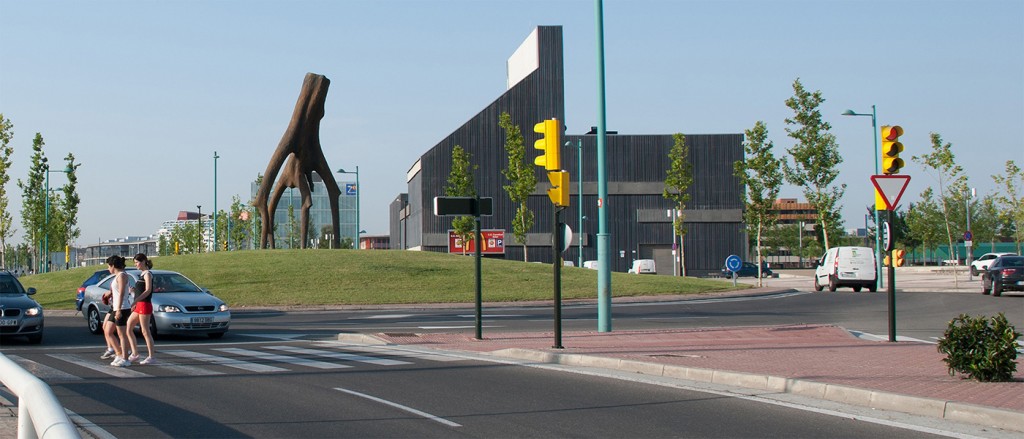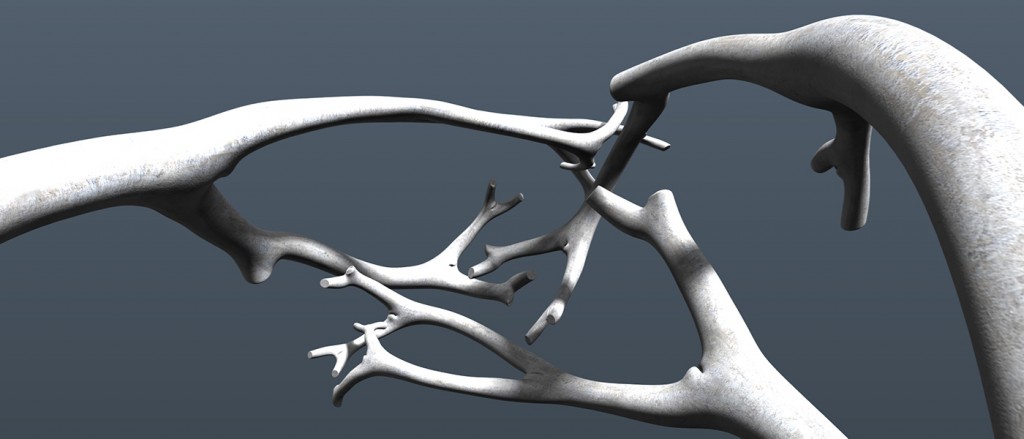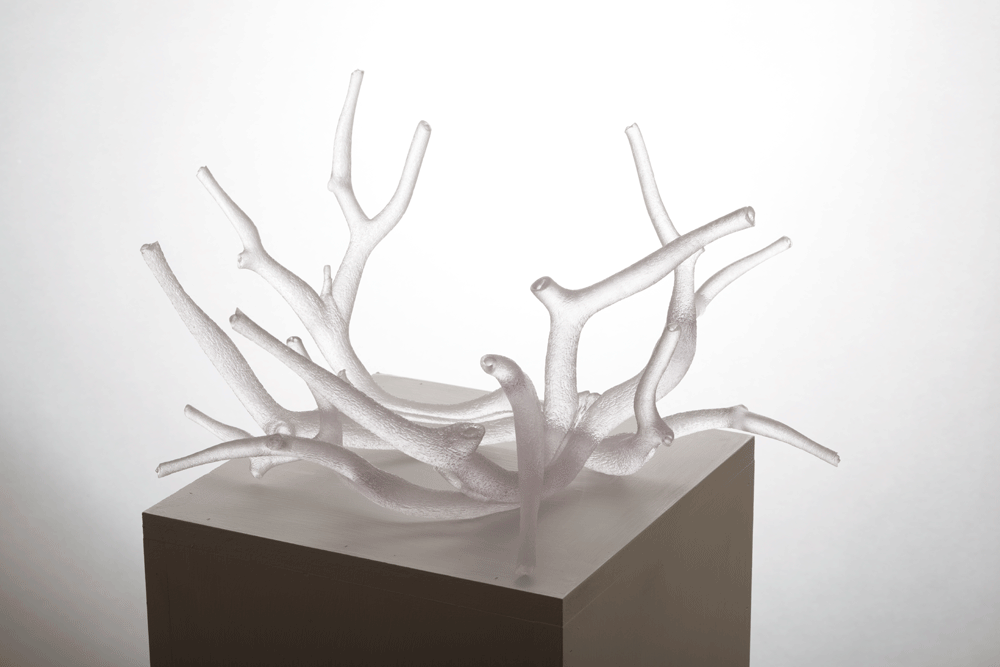Based in East Sussex, UK, Michael Winstone is one of the most experienced artists who has adopted 3D printing in his creative workflow. I recently had a chance to meet him and, after having seen some of his amazing works, I took the opportunity to ask him about how that creative workflow has changed with the greater availability of 3D modelling and 3D printing technologies. I found out that the process Winstone uses to reproduce the sensuality of trees in sculptures goes even beyond the imagination.
Michael begins his creative process by taking digital images of the bark texture from specific trees around the world. He then titles his sculpture with the GPS coordinates of the location where the original tree grows. The interaction between digital information and creativity does not end here because he also uses that data to form the fractal shape and structure of the sculpture. Finally, a model is 3D printed in resin using SLA technology. The larger versions (one of which can be seen in Zaragoza) are created in metal using a 4-axis CNC mill.
The common thread of Winstone’s work is the similarity between human and plant configurations. “Simple fractal elements repeated to create complex organic structures that have self-similarity in anatomic texture, body and construction,” he explained. “The digital art examines the human body within the context of the family structure, it’s relationship with nature, in particular the anatomy of trees and their architecture. It identifies the space they co-exist in and the questions they raise from this union which render into new entities that have self-similarity in anatomic texture, body and construction on an isometric three-dimensional plane.”
In this context, humans and plants are part of a common natural architecture, where they, like all elements, grow, transforming into complex and intertwined sculptural structures. To reproduce these intricate lines, Michael begins with modelling the structure using a software called Modo, from The Foundry. He then turns to Pilgway 3D-Coat to apply the textures and Newtek Lightwave3D to animate for video installations. The 3D printed sculptures are then given a solid form by ARRK Europe, using Materialise Magics to work with the 3D printers. The large public versions are CNC milled by CAPA Foundry Casting.
Michael Winstone’s 3D printed sculptures are created using different technologies. Some of the earlier works implemented the RenShape SL Clear Resin material and a Projet 7000 industrial SLA machine from 3D Systems. Newer versions, requiring higher detail and a multi-material, multicolour composition, have taken advantage of Stratasys’ PolyJet technology and an Object500 Connex3 platform. Either way, the end result makes you think that you never really saw a tree until you look at a 3D printed artist’s interpretation of it.





